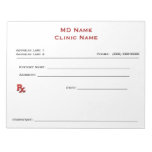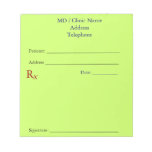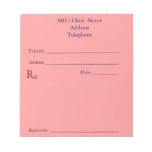As is the case with most specialties, physical therapy (PT) and occupational therapy (OT) have their own unique coding and billing challenges. Ensuring defensible documentation is only half the battle. Providers must also know what guidelines each payer follows for time-based reporting, and they must count carefully. Attention to detail is paramount, says Mike Strong, MSHCA, MBA, CPC, CEMC, bill review technical specialist at SFM, The Work Comp Experts.
In this article, Strong provides six tips to help PT and OT practices stay on track, ensure coding compliance, and avoid payer scrutiny.
1. Document the complexity of PT and OT evaluations
New CPT codes that took effect January 1, 2017 specify low, moderate, and high complexity. This means providers must understand—and document—the specific elements that support each designation, says Strong.
The CPT Manual can help serve as reference. That’s because the descriptions for these new codes include all relevant documentation components. Refer to CPT codes 97161-97163 (PT evaluations) and CPT codes 97165-97167 (OT evaluations) for more information.
Also be mindful of the potential for upcoding these more stratified codes, says Strong. For example, when reporting CPT code 97167 (OT evaluation, high complexity), documentation must support an assessment of five or more performance deficits that limit the patient’s activities. It must also reflect complex clinical decision-making. Without these components, providers could find themselves facing an audit and/or denial, says Strong.
He urges providers to consider the following questions as they document PT and OT evaluation complexity:
- Did an actual examination occur? If so, did it include standardized tests or measurements? “That is really the crux of these codes,” says Strong. This means going above and beyond a subjective patient assessment to include an examination of the patient’s pain and impediments.
- On what criteria is the complexity of the evaluation based?
- What treatment options are considered, and how can these options benefit the patient?
- Does the documentation include a clear and complete plan of care that includes goals, frequency, and duration?
2. Specify regions/areas of the body
This includes documenting the specific muscles and/or joints of the body on which treatment is performed, says Strong. Doing so not only helps justify CPT codes that require therapy on one or more areas of the body, but it also helps payers understand specific injuries so they can assign liability, he adds.
3. Count units of time carefully
First, determine whether your payer requires providers to add all time-based services together (commonly referred to as the Medicare rule) or whether providers must report each time-based code separately (commonly referred to as the commercial or American Medical Association rule), says Strong.
For example, many large commercial carriers with a Medicare Advantage plan and/or Medicaid product often adopt a single-payer policy guideline that follows the Medicare rule, says Strong. “Without identifying what your payers are doing, you’re going to have a problem getting paid for services correctly,” he adds.
Also note that the CPT Manual states that a single unit of time occurs when the provider passes the midpoint for a particular time-based service. For PT and OT codes, the midpoint is eight minutes (i.e., half of 15).
Strong provides this example to help demonstrate the complexities of time-based reporting:
A patient undergoes five minutes of therapeutic exercise, five minutes of manual therapy, and five minutes of therapeutic activity. If a payer follows the commercial rule, the provider cannot bill for any of these services because he or she did not pass the midpoint (i.e., eight minutes) for any of the individual services rendered. However, if a payer follows the Medicare rule, the provider can add all services together and report one unit of 15 minutes.
In terms of documenting the time itself, be as specific as possible, says Strong. Don’t use a range. Also, distinguish between timed and untimed services. Consider this example: “During a 30-minute visit, I spent 20 minutes performing manual therapy and 10 minutes of unattended ice pack application.”
4. Know when to apply modifier -59
This modifier, which denotes a distinct procedural service, may apply in the PT/OT specialty when the same provider performs two timed procedures in two distinctly different blocks of time on the same day. For example, a provider performs manual therapy for patient A between 9:15-9:30 and therapeutic activities between 9:30-9:45. The provider can report both services using modifier -59. Append the modifier to the code for the therapeutic activities.
Providers shouldn’t bill a time-based code for more than one patient at the same time unless they can show the services were performed during separately intervals and/or with the help of a PT or OT assistant who is a reimbursable provider under the payer contract, says Strong.
One caveat is therapeutic procedures performed in a group setting (i.e., for two or more individuals) simultaneously. In this scenario, report 97150 for each member of the group. This is not a time-based code, but note reimbursement is often lower for this service.
5. Distinguish between time and untimed electrical stimulation
Report 97032 for manual (timed) electrical stimulation and 97014 for unattended (untimed) electrical stimulation. “If you’re not documenting that you were physically present for the direct contact of that patient, you’re not going to be able to get that time-based code, and you will be down-coded to the untimed code,” says Strong. Also be sure to check with your carrier before reporting these codes. For example, Medicare requires providers to use G0283 for the unattended electrical stimulation.
6. Review the referral and utilization before rendering treatment
Does the diagnosis for which PT or OT is ordered match the patient’s presenting diagnosis? If not, the therapist may need to clarify the diagnosis so it justifies any treatment rendered. Strong says this often happens when a patient presents to the emergency room with pain in one area of the body, receives a referral for treatment of that pain, but then presents to therapy after the pain has radiated to a different area.
Ensure that the treatment plan is medically necessary for the diagnosis and the examination findings. Strong says providers should avoid prolonging unwarranted treatment to simply increase revenue. “Proper utilization is critical in today’s market, especially in physical medicine where reimbursement caps are common in Medicare, some network organizations, and some commercial carriers,” he adds.
Keep these tips in mind to ensure compliant coding and billing. Strong says it may be a lot to consider, but it’s worth it in terms of avoiding an audit and ensuring accurate payment.




No comments:
Post a Comment